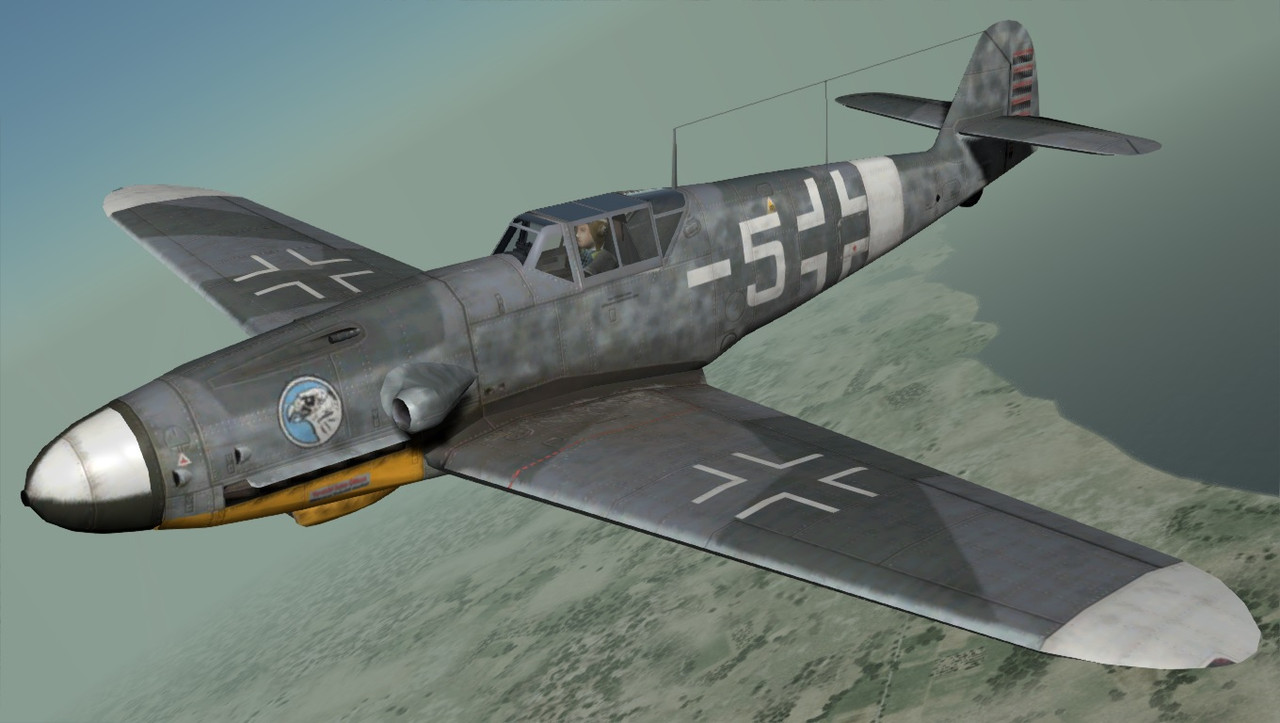Bf 109G-2 flown by Anton Hafner of 4./Jg 51 in November 1942. Having already downed 62 aircraft over the Soviet Union, Anton Hafner had been awarded the Knight's Cross and granted leave from II/Jg 51 at the end of August. In late October, II/Jg 51 rotated off the front in Russia to trade in their war weary Bf 109F's for factory fresh Fw 190A's at the rear depot at Jesau, East Prussia(now Poland). Hafner would reunite with his unit there. With the Operation Torch invasion in North Africa, the Fw 190 conversion training was cancelled and instead II/Jg 51 would travel to the Messerschmitt factory at Wiener-Neustadt to re-equip with Bf 109G-2's and then deploy to Tunisia from there, arriving on November 14th, 1942.
Hafner added to his score on Nov. 16th by downing a Spitfire. It was the first of 20 victories which he would attain over Tunisia. On January, 2nd 1943, Hafner would be injured while trying to bail out of his damaged 109 - hitting the rudder with his head and fracturing his skull. It would take six months for him to recover and return to combat flying - this time back in central Russia. He would add a further 122 victories before being killed on October 17th 1944. Anton Hafner's 204 total victories made him the top scoring ace of Jg 51.
Hafner's 109G-2 features the standard day fighter gray camouflage scheme (The WNF plant rarely, if ever, painted their 109's in the desert scheme, even when installing desert equipment.) 62 victory marks with red stars are painted on the rudder, indicating that this plane was photographed some time before Nov. 16. The nose can't be seen in the reference photo, but I elected to add the Jg 51 emblem to the left side only - this was commonly seen a few months later on II/Jg 51 BF 109G-6's. Unique to II/Jg 51 aircraft is painting the Gruppe's ID bar forward of the aircraft's fuselage number.

